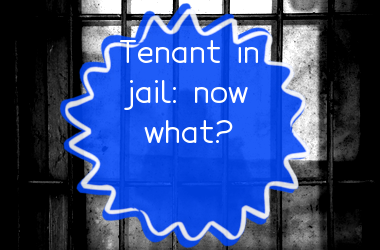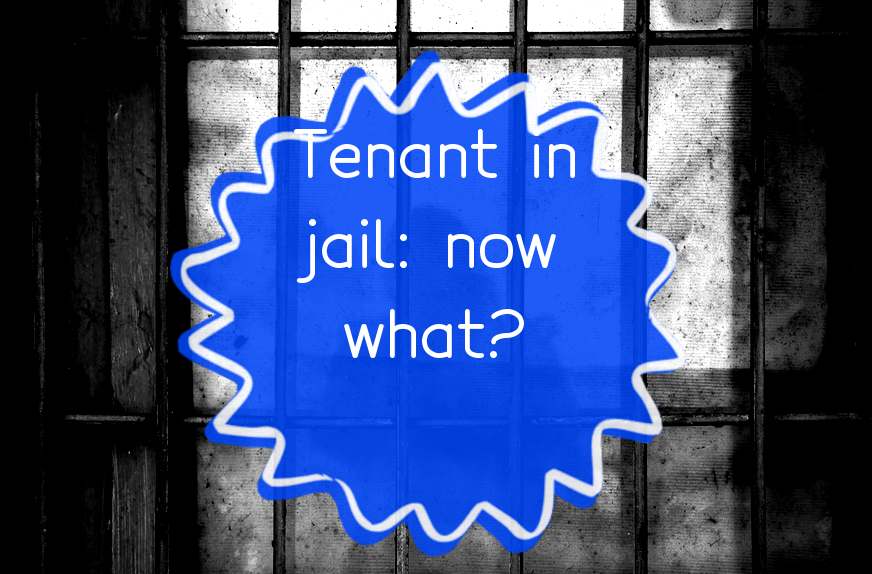If your tenant goes to jail, they may be unable to pay rent on time or at all, and the responsibility falls on you to find a solution for the unpaid rent. In most cases, a lease agreement remains in place even if the tenant is incarcerated. As a landlord, you need to follow the proper legal eviction process if the tenant is unable to pay rent or if there are other lease violations.
If your tenant goes to jail for a short period, you may choose to allow them to pay the rent when they are released. If your tenant is going to jail for a long period, you may need to consider finding a new tenant or subletting the property.
It's also important to review your lease agreement to see what specifically states for these types of situations and seek legal or professional advice to handle unexpected situations.
What to Do if Your Tenant Goes to Jail: a Step-by-Step Guide
Here are some general guidelines that can be followed in case a tenant goes to jail:
- 1Check the Lease Agreement: The first step is to carefully go through the lease agreement to see if it provides any guidelines about what to do in such a scenario.
- 2Obtain Legal Advice: It is always advisable to seek legal advice as it will help ensure that all the necessary legal requirements are met.
- 3Communicate with the Tenant: It is important to communicate with the tenant to understand the situation better and to make necessary arrangements for payment of rent and maintenance of the rental property.
- 4Secure the Property: If the property is left unoccupied, it is essential to secure it to prevent any damages or theft.
- 5Seek a Replacement Tenant: If the tenant is going to be in jail for an extended period, it may be necessary to find a replacement tenant to cover the rent and maintain the property.
Overall, the landlord must balance compassion and the responsibility of protecting their rental investment and themselves as a landlord.
Confirm your tenant is in jail
Confirming whether a tenant is in jail involves following a specific process that is typically done by the landlord or property manager responsible for the rental unit. The process typically includes the following steps:
- 1Gathering information: The landlord must obtain the name, age, and address of the tenant. This information can be found in the rental agreement or lease.
- 2Contacting authorities: The landlord must contact the local law enforcement agency or jail to confirm the tenant's status. The landlord will have to provide the tenant's information, and the authorities will either confirm or deny the tenant's incarceration.
- 3Repossessing the rental unit: If the tenant is confirmed to be in jail, the landlord may begin the process of repossessing the rental unit. This may involve filing the necessary paperwork with the court and coordinating with the local sheriff's office to evict the tenant and regain possession of the rental unit.
Overall, confirming your tenant is in jail involves verifying the tenant's status with local authorities and taking appropriate actions to reclaim the rental unit.
Get in touch with your tenant
Here is an explanation of getting in touch with a tenant:
Getting in touch with your tenant means initiating communication with the person who is renting your property. This could be done through various means such as phone calls, emails, or even face-to-face meetings. Some common reasons for getting in touch with a tenant include:
- 1Collecting rent payments: Landlords might need to remind tenants of impending rent payments or follow up on overdue payments.
- 2Maintenance and repairs: Landlords may need to communicate with tenants about necessary repairs or maintenance work that needs to be done on the property.
- 3General communication: A landlord might want to check in with the tenant to see if everything is going well or to discuss any issues that the tenant might be experiencing.
It is important for landlords to maintain open and effective communication channels with their tenants to build trust and ensure that both parties are satisfied with the rental arrangement.
Know your options
Knowing your options refers to being aware of the various choices or alternatives available to you in a given situation. This can involve considering different courses of action, potential outcomes, and weighing the pros and cons of each option. By understanding your options, you can make informed decisions that are most likely to lead to your desired outcome. It is important to actively seek out information, gather resources, and consult with knowledgeable individuals when making decisions in order to ensure that you are fully aware of your options.
Pursue Legal Eviction for Non-Payment if No Other Routes Exist
Pursuing legal eviction for non-payment is a legal process in which a landlord seeks to remove a tenant from their property for failing to pay the rent. This process may be initiated if the tenant has not paid the rent despite receiving multiple reminders and notices from the landlord. Before pursuing legal eviction, the landlord must follow a specific procedure that includes providing written notice to the tenant, filing a complaint with the court, and attending a hearing.
If the court finds in favor of the landlord, the tenant will be ordered to vacate the property, and the landlord may obtain a Writ of Possession to physically remove any remaining tenants or their belongings. Pursuing legal eviction for non-payment is a last resort when other attempts to address the issue of non-payment have been unsuccessful. It is important for landlords to follow the proper legal procedures when seeking to evict a tenant to avoid any potential legal consequences.
Just one more thing: if you liked the article, please like us on social media and share this article with friends.



